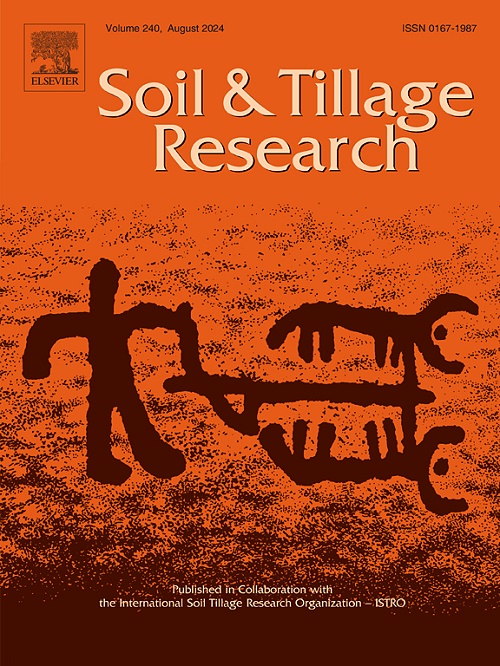Soil organic carbon formation in grassland ecosystems: Higher efficiency of roots than shoots and rhizodeposition
IF 6.1
1区 农林科学
Q1 SOIL SCIENCE
引用次数: 0
Abstract
The formation and stability of soil organic carbon (SOC) are crucial for ecosystem carbon sequestration. Plant shoot litter, root litter, and rhizodeposition are the primary plant-derived carbon sources for SOC, and their quantities and proportions are susceptible to global change. However, their relative contributions to the formation and pool size of SOC and its fractions remain uncertain. In this study, we conducted a pot experiment followed by two incubation experiments, using natural 13C abundance isotope tracing to disentangle the effects of plant rhizodeposition, shoot litter, and root litter on SOC. The results showed that rhizodeposition during plant growth increased SOC stability by enhancing mineral-associated organic carbon and reducing particulate organic carbon, without affecting total SOC in the short term. Neither shoot litter nor root litter impacted SOC during short-term decomposition. Over the entire plant life cycle, the efficiency of plant carbon incorporation into SOC from root litter was 10 and 12 folds of that from shoot litter and rhizodeposition, respectively. Our findings indicate that, although root litter is less abundant than shoot litter, it plays a pivotal role in driving new SOC formation. This should be taken into account when predicting SOC sequestration, particularly given the turnover of roots under global change.
求助全文
约1分钟内获得全文
求助全文
来源期刊

Soil & Tillage Research
农林科学-土壤科学
CiteScore
13.00
自引率
6.20%
发文量
266
审稿时长
5 months
期刊介绍:
Soil & Tillage Research examines the physical, chemical and biological changes in the soil caused by tillage and field traffic. Manuscripts will be considered on aspects of soil science, physics, technology, mechanization and applied engineering for a sustainable balance among productivity, environmental quality and profitability. The following are examples of suitable topics within the scope of the journal of Soil and Tillage Research:
The agricultural and biosystems engineering associated with tillage (including no-tillage, reduced-tillage and direct drilling), irrigation and drainage, crops and crop rotations, fertilization, rehabilitation of mine spoils and processes used to modify soils. Soil change effects on establishment and yield of crops, growth of plants and roots, structure and erosion of soil, cycling of carbon and nutrients, greenhouse gas emissions, leaching, runoff and other processes that affect environmental quality. Characterization or modeling of tillage and field traffic responses, soil, climate, or topographic effects, soil deformation processes, tillage tools, traction devices, energy requirements, economics, surface and subsurface water quality effects, tillage effects on weed, pest and disease control, and their interactions.
 求助内容:
求助内容: 应助结果提醒方式:
应助结果提醒方式:


